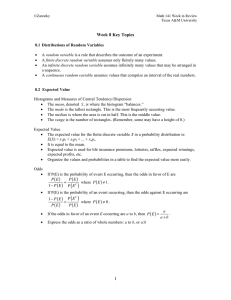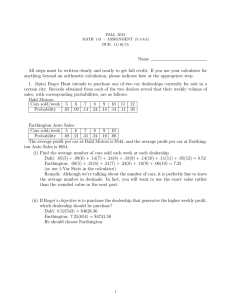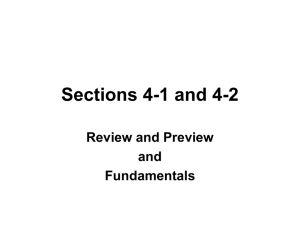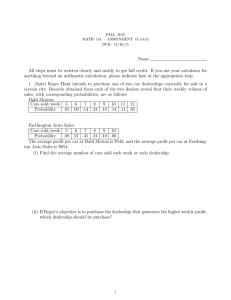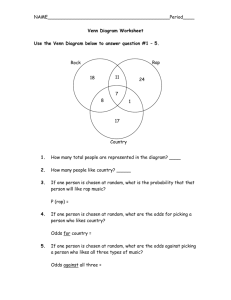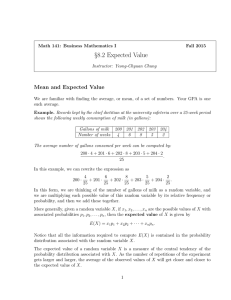Document 10413172
advertisement
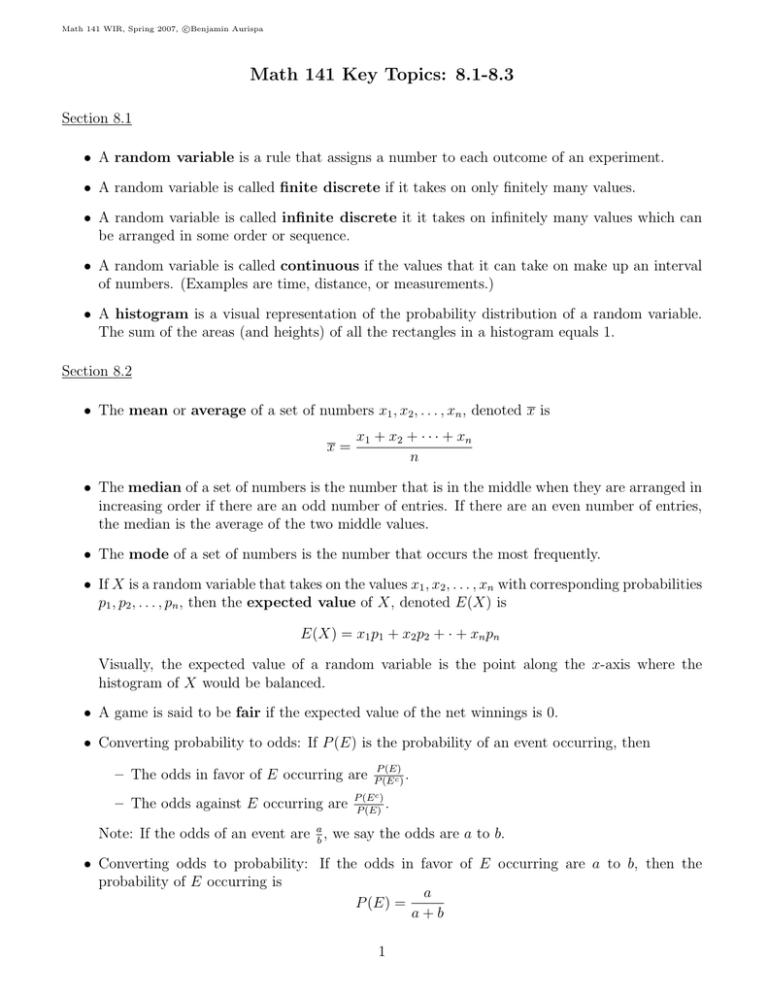
c Math 141 WIR, Spring 2007, Benjamin Aurispa Math 141 Key Topics: 8.1-8.3 Section 8.1 • A random variable is a rule that assigns a number to each outcome of an experiment. • A random variable is called finite discrete if it takes on only finitely many values. • A random variable is called infinite discrete it it takes on infinitely many values which can be arranged in some order or sequence. • A random variable is called continuous if the values that it can take on make up an interval of numbers. (Examples are time, distance, or measurements.) • A histogram is a visual representation of the probability distribution of a random variable. The sum of the areas (and heights) of all the rectangles in a histogram equals 1. Section 8.2 • The mean or average of a set of numbers x1 , x2 , . . . , xn , denoted x is x= x1 + x2 + · · · + xn n • The median of a set of numbers is the number that is in the middle when they are arranged in increasing order if there are an odd number of entries. If there are an even number of entries, the median is the average of the two middle values. • The mode of a set of numbers is the number that occurs the most frequently. • If X is a random variable that takes on the values x1 , x2 , . . . , xn with corresponding probabilities p1 , p2 , . . . , pn , then the expected value of X, denoted E(X) is E(X) = x1 p1 + x2 p2 + · + xn pn Visually, the expected value of a random variable is the point along the x-axis where the histogram of X would be balanced. • A game is said to be fair if the expected value of the net winnings is 0. • Converting probability to odds: If P (E) is the probability of an event occurring, then – The odds in favor of E occurring are – The odds against E occurring are P (E) . P (E c ) P (E c ) . P (E) Note: If the odds of an event are ab , we say the odds are a to b. • Converting odds to probability: If the odds in favor of E occurring are a to b, then the probability of E occurring is a P (E) = a+b 1 c Math 141 WIR, Spring 2007, Benjamin Aurispa Section 8.3 • The variance of a random variable, V ar(X), is a measure of the spread of the distribution about the expected value (or mean). • The standard deviation of a random variable is another measure of spread. The standard deviation, σ, is defined to be σ= q V ar(X) which means that σ 2 = V ar(X) Note: Not all instructors may cover the following topic. • If X is a random variable with expected value µ and standard deviation σ, then Chebychev’s Inequality says that 1 P (µ − kσ ≤ X ≤ µ + kσ) ≥ 1 − 2 k What does this mean? Chebychev’s Inequality allows us to estimate the probability that an outcome lies within k standard deviations of the mean (expected value). k standard deviations below the mean is µ − kσ and k standard deviations above the mean is µ + kσ. The value 1 − k12 is the estimate used. 2

